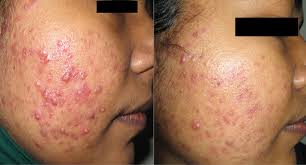
A dermatologist is a doctor who specializes in conditions involving the skin, hair, and nails. A dermatologist can identify and treat more than 3,000 conditions. These conditions include eczema, psoriasis, and skin cancer, among many others.
You can also contact us via the whatsapp link above
The skin is an incredible organ. It is your first line of defense against disease, protects your other organs, warms you up and cools you down, and sends messages about how healthy you are inside. Dermatologists are expert medical doctors and skin surgeons with the unique skills and experience to offer the best care for the organ that cares for you.
Dermatologists care for people of all ages, from newborns to seniors.
What a dermatologist do;
- Treat a baby’s prominent birthmark that threatens the child’s eyesight
- Remove a mother’s deadly melanoma at its earliest, most treatable stage
- Offer relief for a student whose chronic eczema makes sleep nearly impossible
- Diagnose the life-threatening liver condition causing a grandfather’s unbearable itching
- Treat the hair loss of a young woman, helping her gain the confidence to complete a job search
What types of conditions do dermatologists treat?
Dermatologists can treat thousands of conditions that affect your skin, hair, or nails. A few of the most common conditions they treat include:
- Hair loss. Hair loss may be caused by hereditary baldness. Conditions like stress, illness, and hormonal changes may also impact hair loss. A dermatologist can determine the underlying cause and help treat it if possible.
- Nail problems. Spots, discoloration, and nail separation are common nail issues that are treated by dermatologists.
- Acne. Based on the severity of your acne, a dermatologist can treat this condition with topical treatments, medication, lasers, or other light therapies, chemical peels, or by removing large cysts.
- Skin cancer. Skin cancer can occur anywhere on your body. A dermatologist can remove cancer cells and monitor you to make sure it doesn’t return.
- Dermatitis. Dermatitis encompasses several types of skin conditions that cause inflammation and irritation. This may include eczema, cradle cap, and allergic reactions.
- Infections. Viruses, bacteria, fungi, and parasites can all find their way into your skin and cause a variety of skin infections. A dermatologist can help diagnose the cause of infections and prescribe treatment.
What types of procedures do they do?
Dermatologists can perform a wide variety of procedures, from minor ones like skin tag removal to more involved ones, like skin cancer surgery.
Some procedures that dermatologists regularly do include:
- Surgical excision. A dermatologist may perform a surgical excision to remove growths like moles, skin tags, and lesions. This is usually done with local anesthesia so you don’t feel pain.
- Cryotherapy. Cryotherapy is a unique treatment that involves controlled exposure to extremely cold temperatures. It can be used to treat skin conditions like warts, skin tags, and some tumors.
- Sclerotherapy. Sclerotherapy is a procedure that helps treat spider and varicose veins. It involves injecting chemicals into damaged veins which help to diminish the appearance of these types of veins.
- Biopsies. A dermatologist can perform different types of biopsy procedures to diagnose or rule out skin cancer or other conditions.
- Laser therapy. Laser therapy treatments may be used to remove warts, moles, sun spots, tattoos, acne scars, blemishes, wrinkles, or unwanted hair.
- Mohs surgery. This type of skin cancer surgery removes thin layers of tissue around a tumor. Between each removal, the doctor examines the skin for signs of additional cancer cells. When no more cancer cells are found, they stop removing tissue.
- Chemical peels. Chemical peels remove damaged skin. Peels can help rejuvenate new skin and reduce signs of aging.
- Cosmetic injections. A dermatologist can help diminish the appearance of wrinkles and sagging skin by injecting Botox or fillers during an office visit.
- Dermabrasion. This exfoliating technique can reduce the appearance of fine lines, age spots, acne scars, and precancerous skin patches.
- Tumescent liposuction. Dermatologists use liposuction to remove unwanted fat from targeted areas of your body.